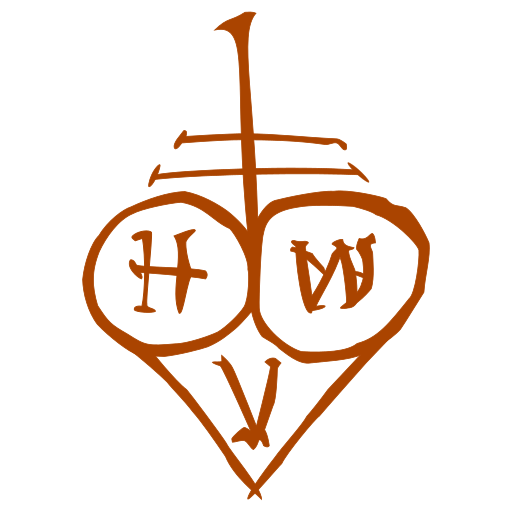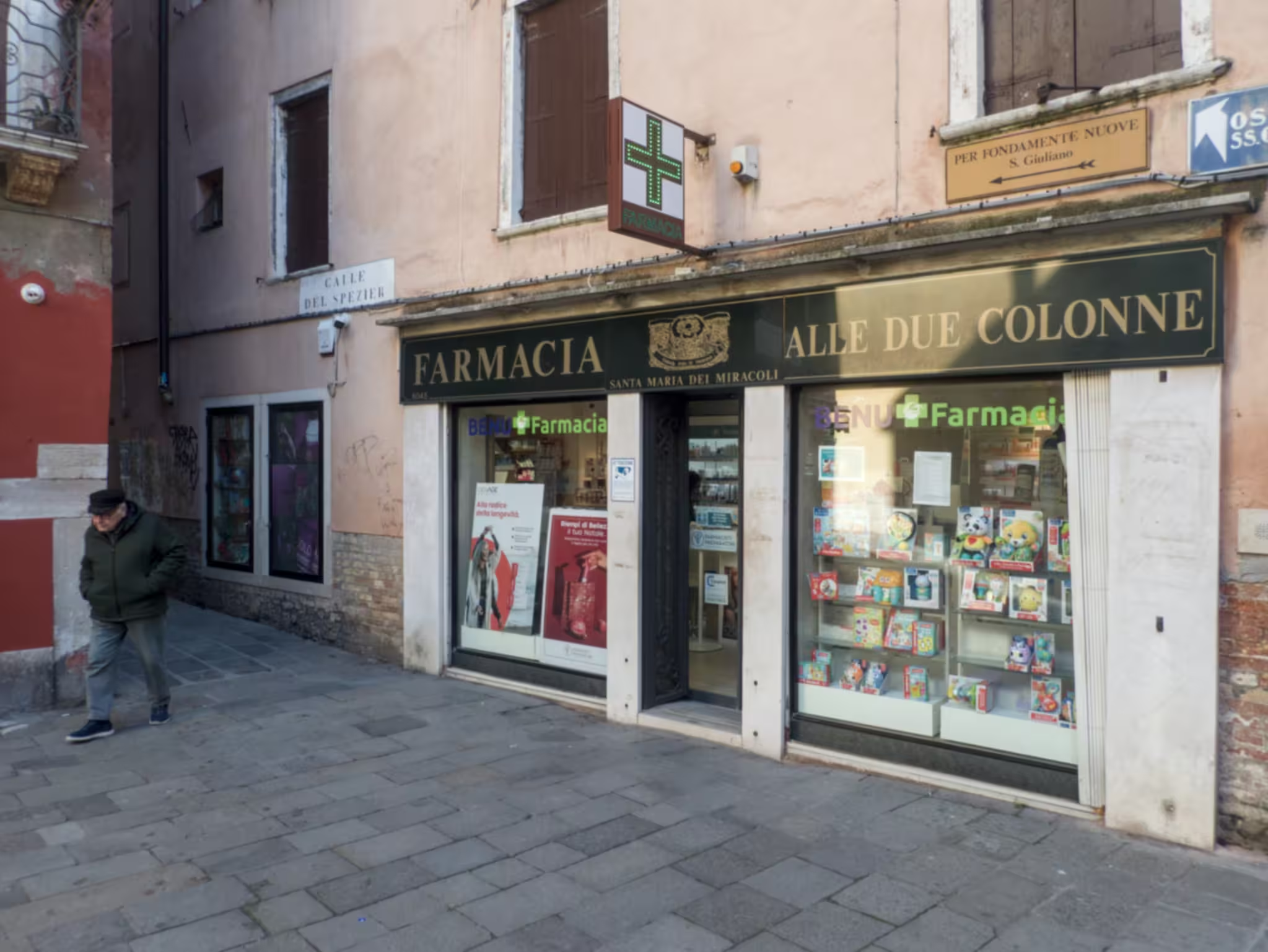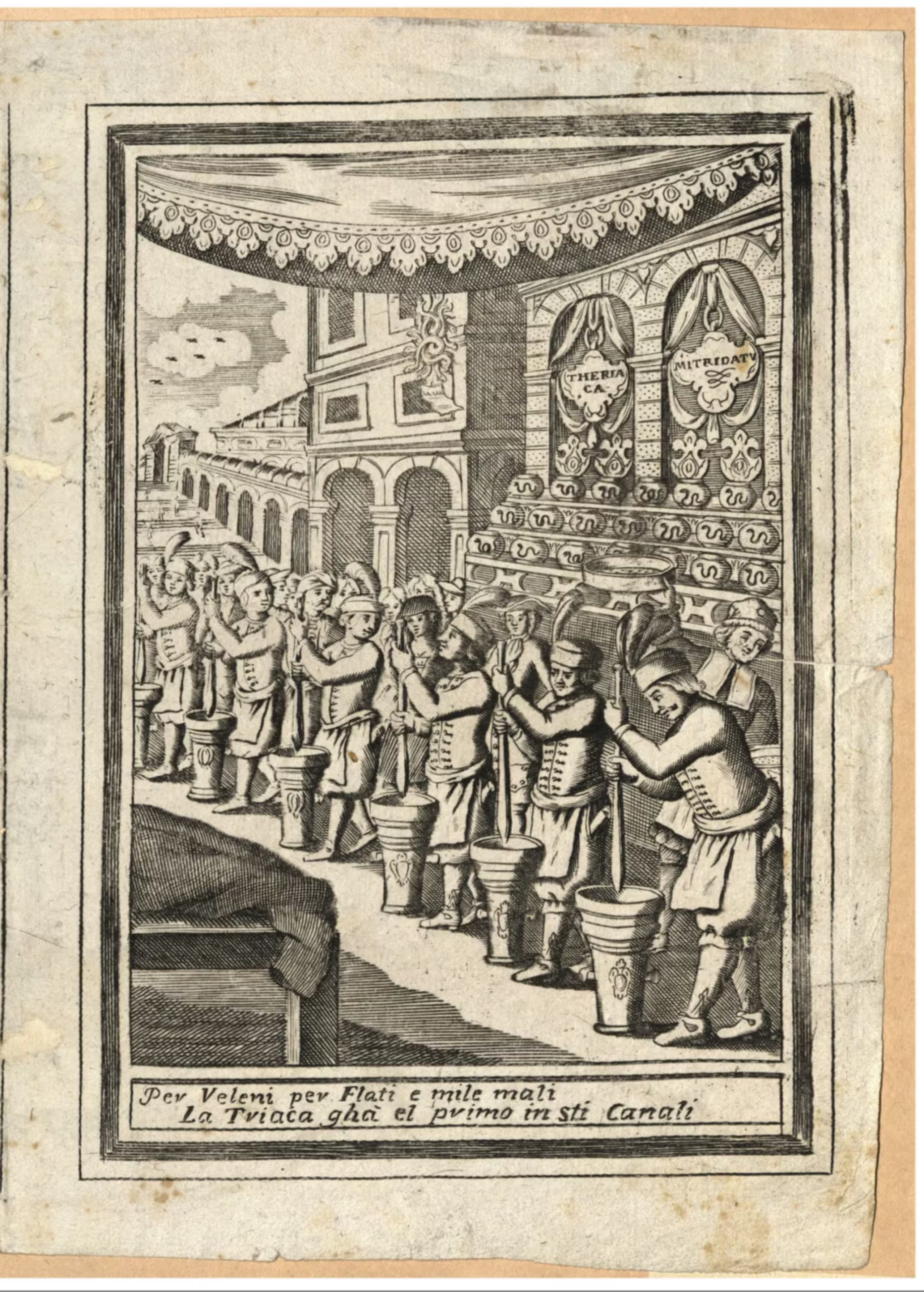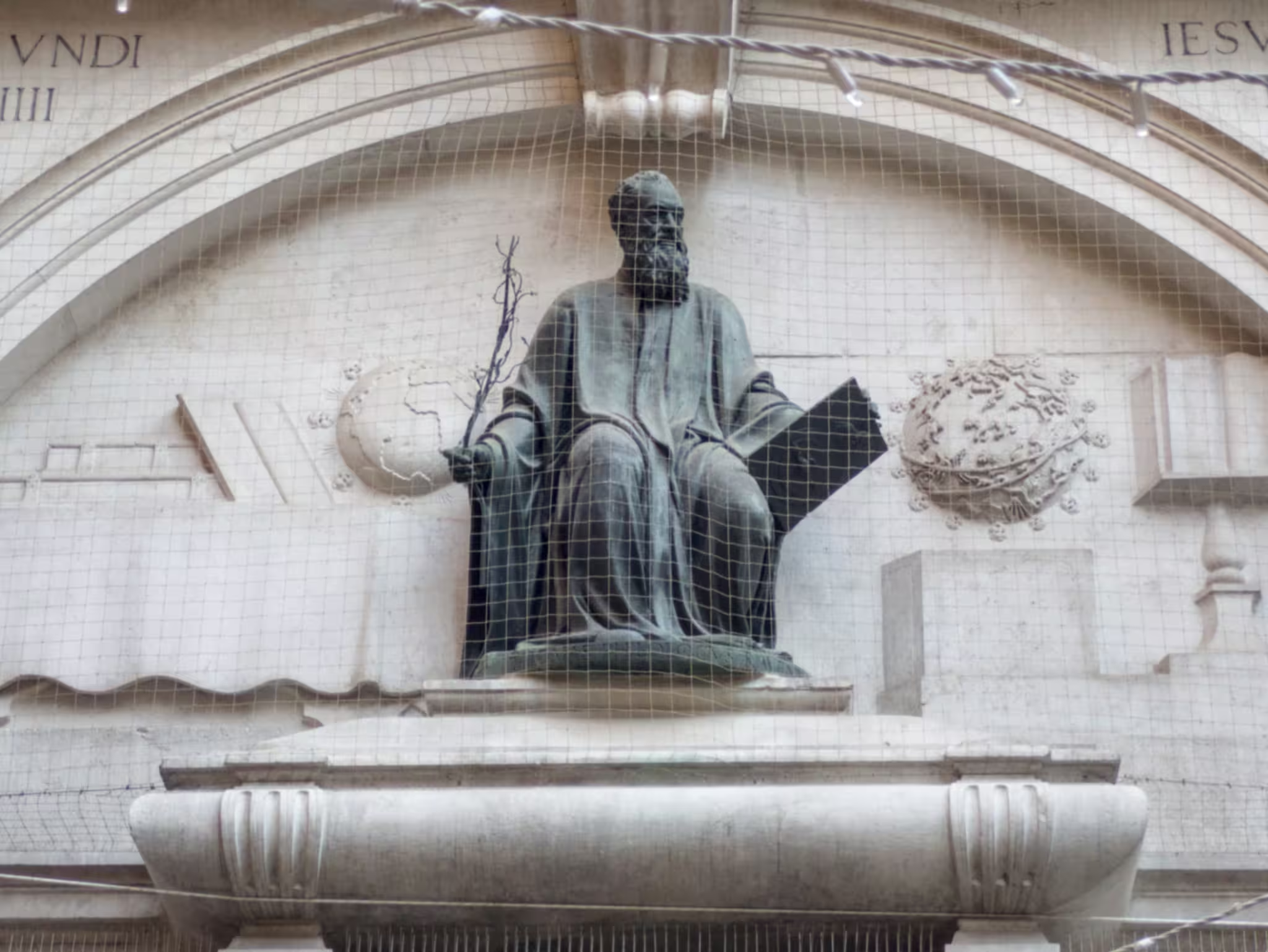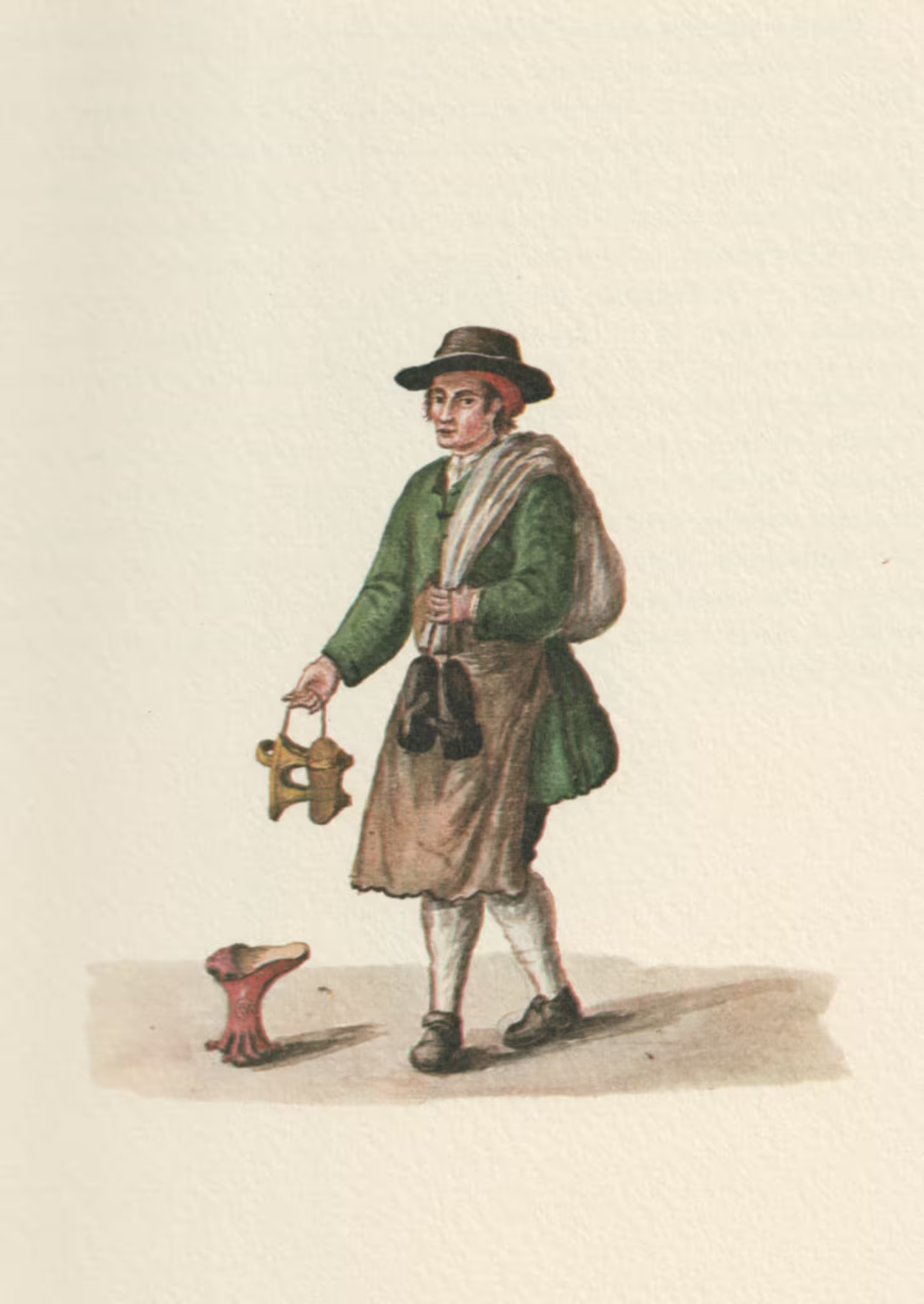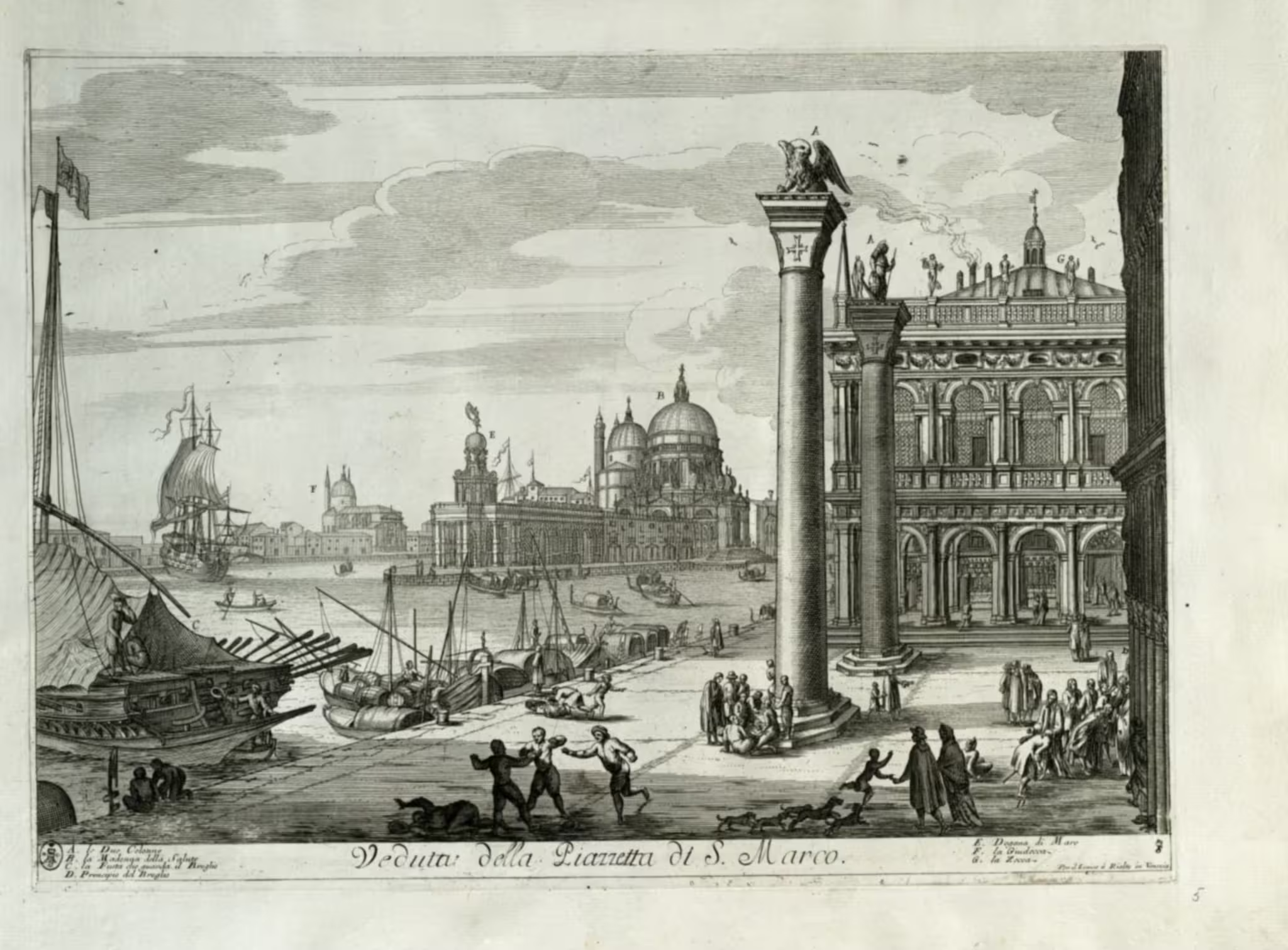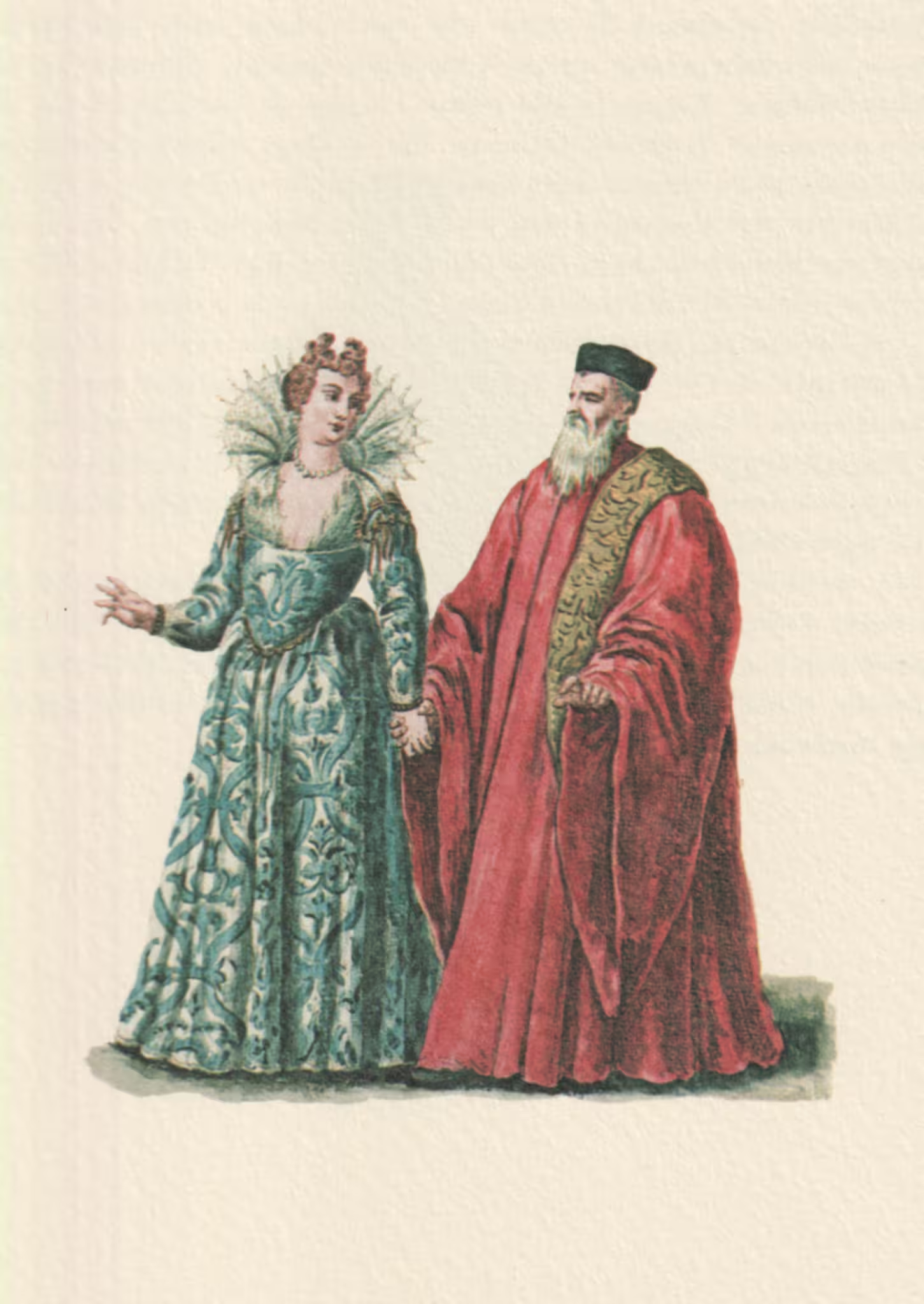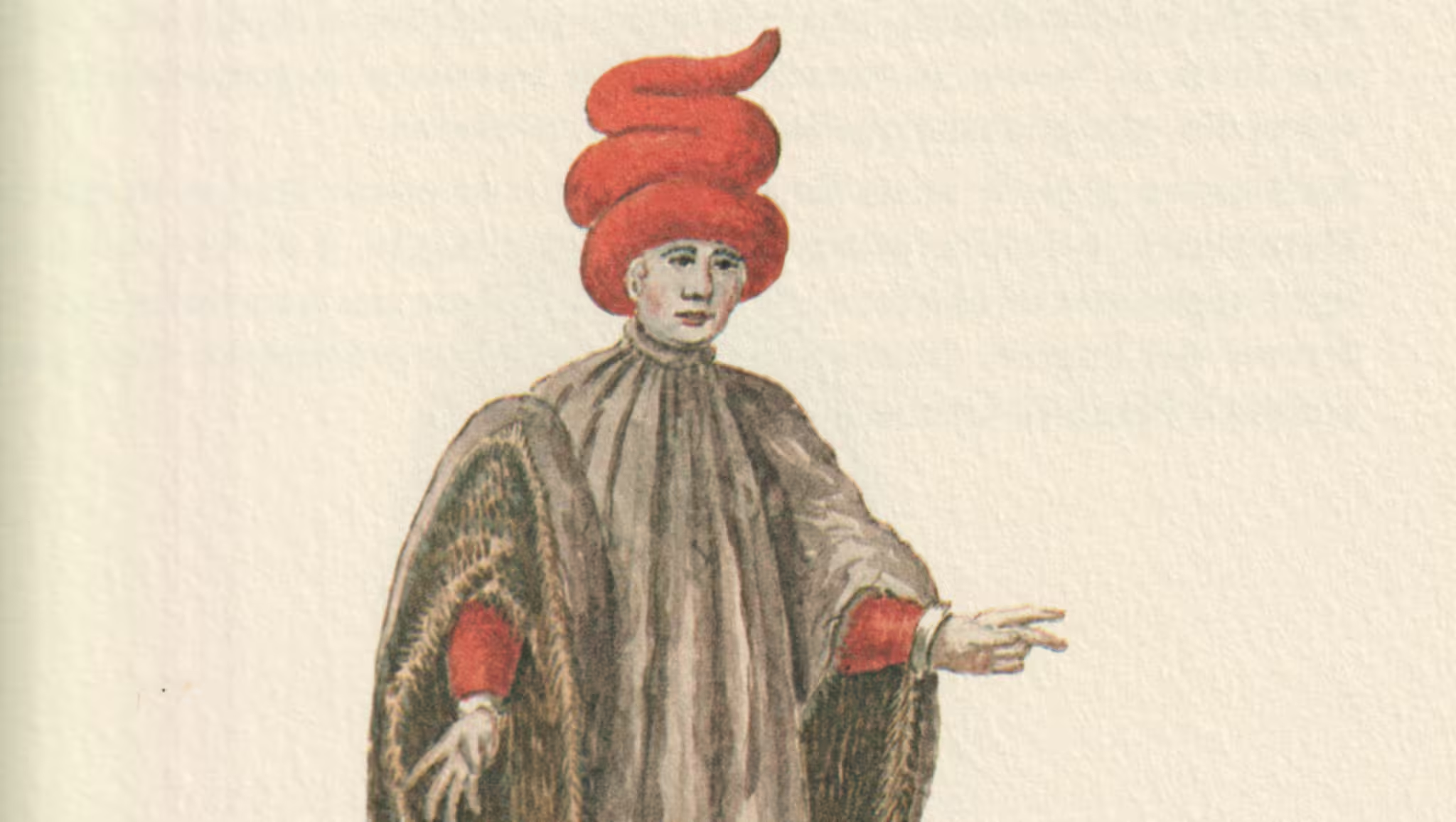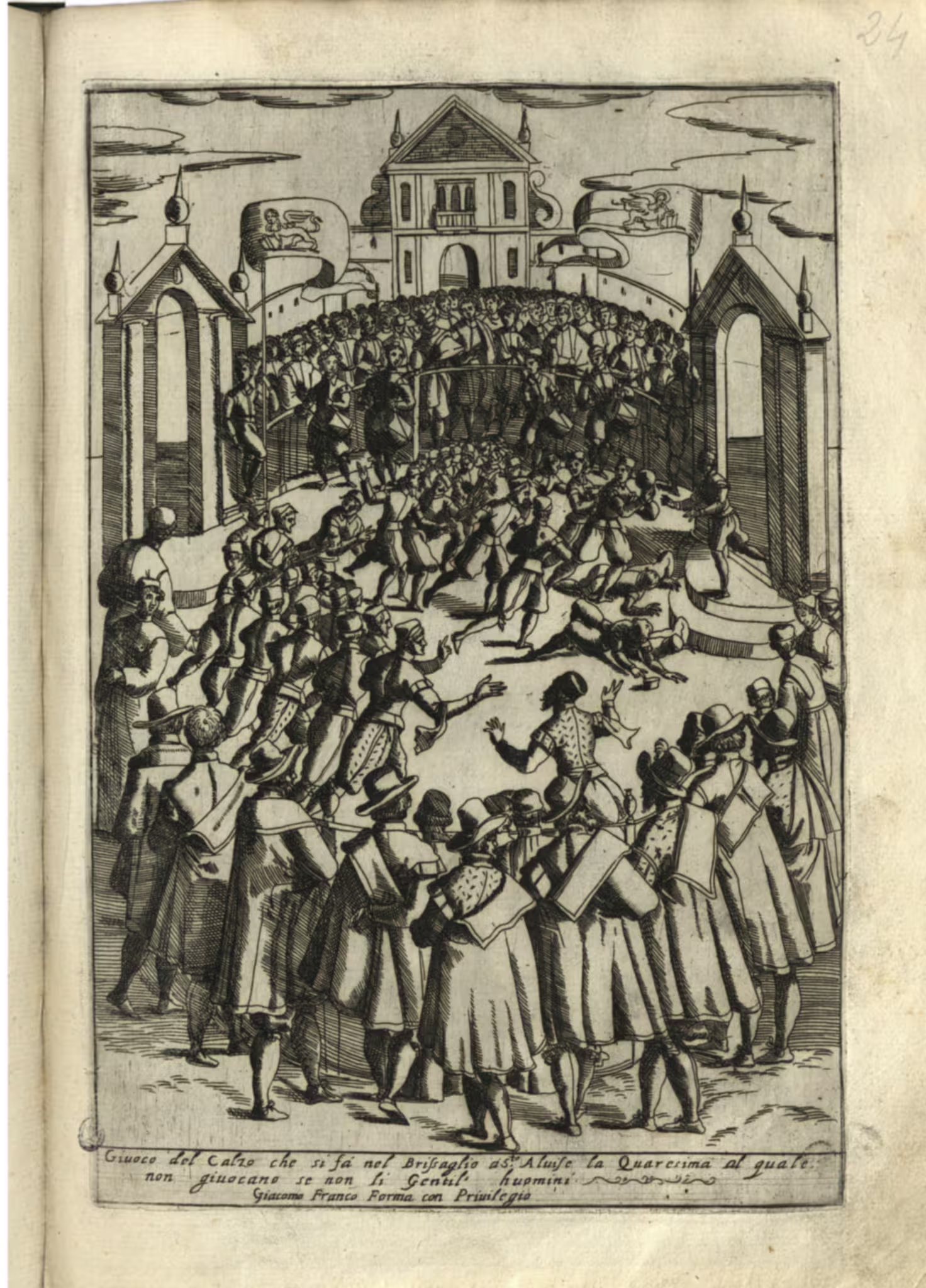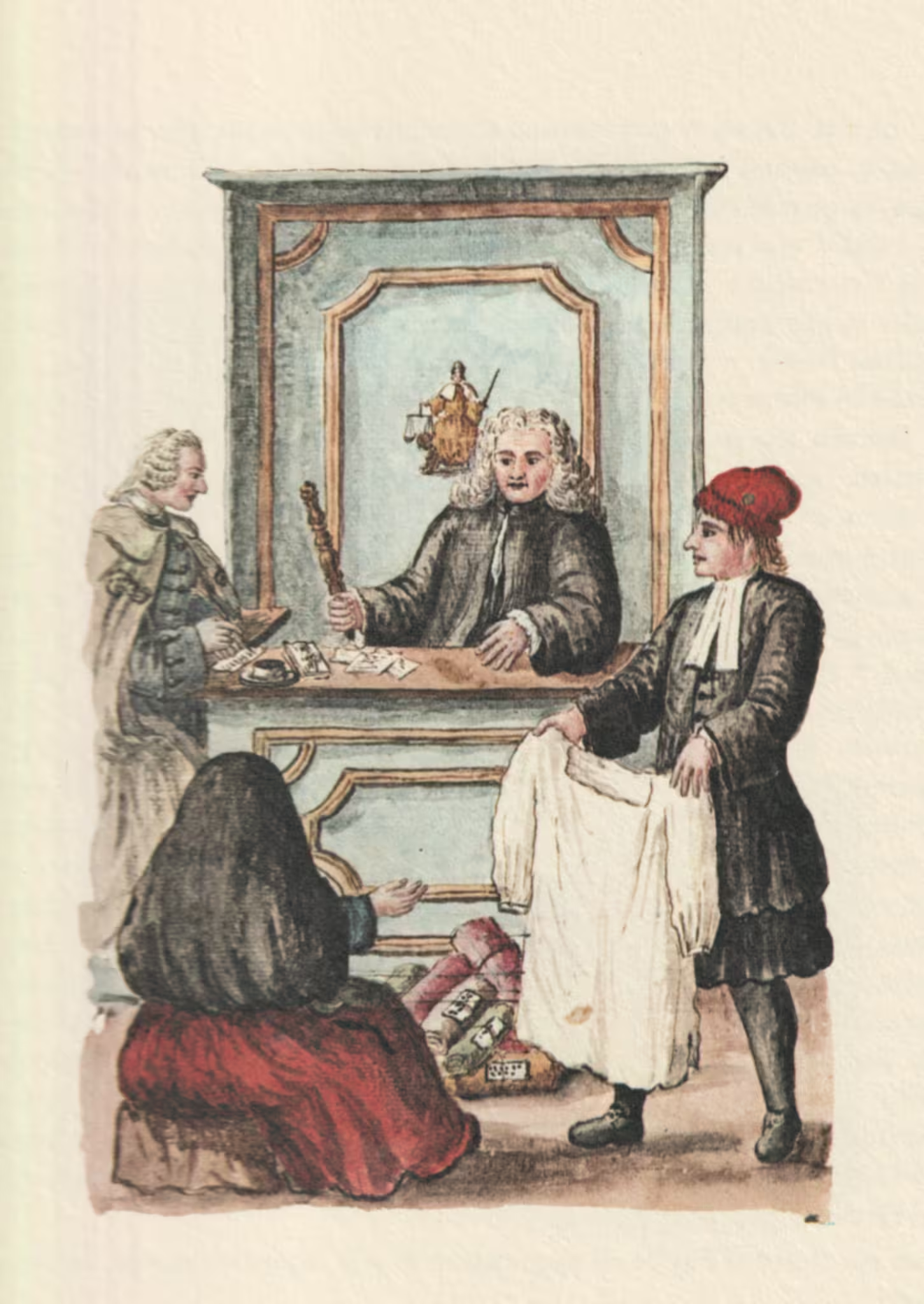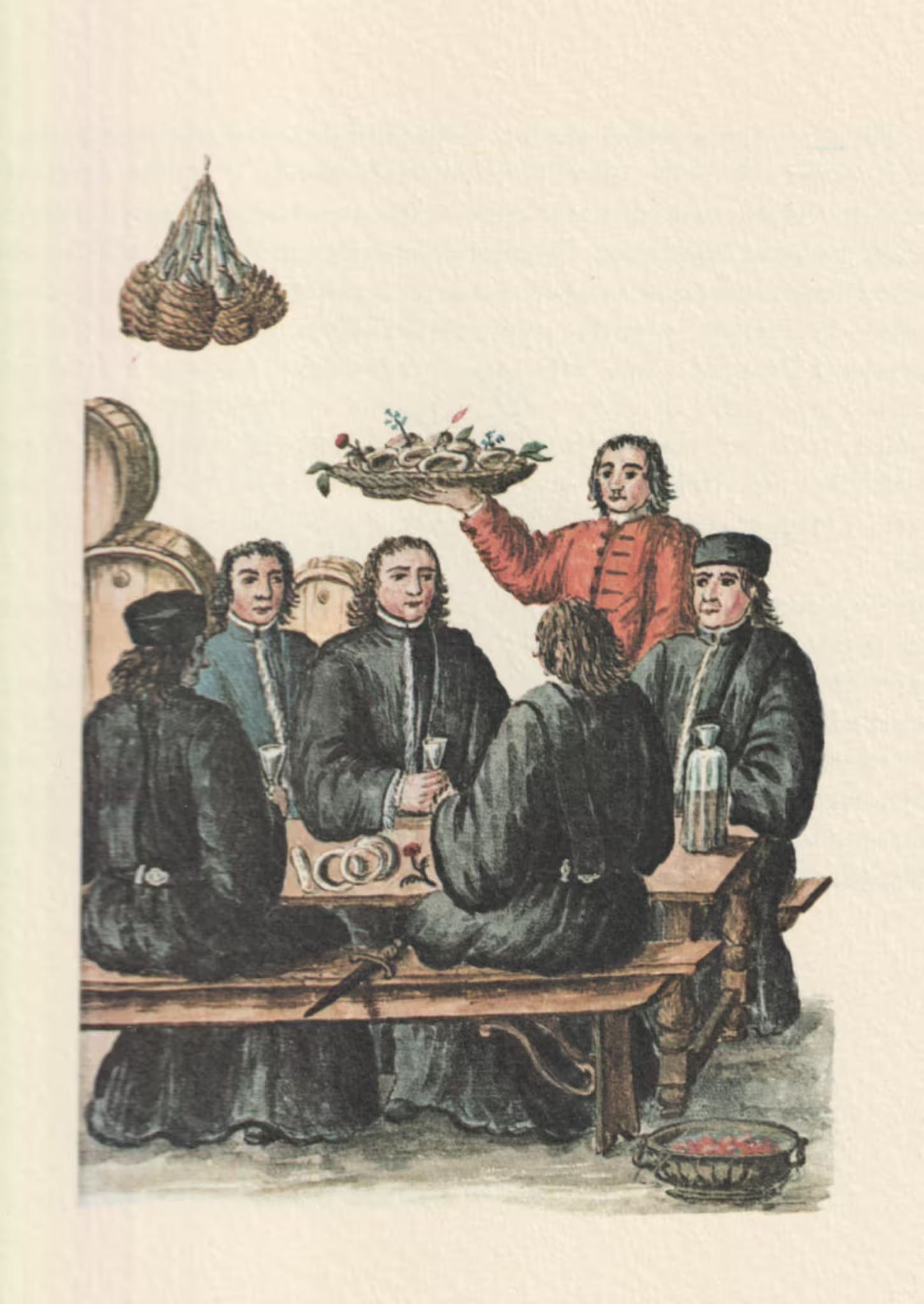Venezia
-
The preparation of Theriac — two prints (1600s)
Two prints, from the 1600s, depicting the production in public of the wonder-medicine theriac, at the Testa d’Oro apothecary at Rialto.
-
Thomas Philologus Ravennas
The statue on the façade of the San Zulian church is not a saint, but an astrologer and doctor, who sold remedies for syphilis.
-
Arte Quadrupla — Quadruple Craft — Grevembroch 4-64
“Arte Quadrupla” (Quadruple Art) from the Gli abiti de veneziani (1754) by Giovanni Grevembroch, translated by René Seindal.
-
Veduta della Piazzetta di S. Marco — Il Gran Teatro di Venezia — plate 5
“Veduta della Piazzetta di S. Marco” from the “Gran Teatro di Venezia”, published by Domenico Lovisa, c. 1717.
-
Procuratore, e Cavaliere — Procurator and Cavalier — Grevembroch 1-18
“Procuratore, e Cavaliere” (Procurator, and Cavalier) from the Gli abiti de veneziani (1754) by Giovanni Grevembroch, translated by René Seindal.
-
Giovane in Dogalina — Young Nobleman in Dogalina — Grevembroch 1-32
“Giovane in Dogalina” (Young Nobleman in Dogalina) from the Gli abiti de veneziani (1754) by Giovanni Grevembroch, translated by René Seindal.
-
Giuoco del calzo — Habiti d’huomeni et donne venetiane — 35
“Giuoco del Calzo” from the “Habiti d’huomeni et donne venetiane”, published by Giacomo Franco, c. 1610.
-
Nobile sopra l’incanto — Nobleman as Auctioneer — Grevembroch 1-81
“Nobile sopra l’incanto” (Noble as Auctioneer) from the Gli abiti de veneziani (1754) by Giovanni Grevembroch, translated by René Seindal.
-
Compari alla Malvasia — Malvasia Companions — Grevembroch 1-84
“Compari alla Malvasia” (Malvasia Companions) from the Gli abiti de veneziani (1754) by Giovanni Grevembroch, translated by René Seindal.
